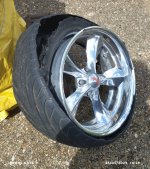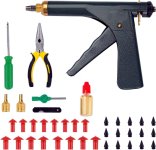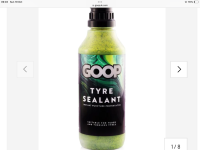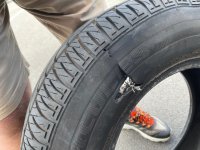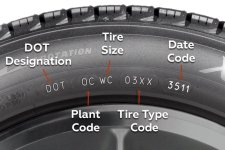Couple of questions relating to the use of Goop.
As the stuff presumably remains semi-liquid within the tyre.......does it affect wheel balancing?
When eventually replacing tyre - or removing from rim do tyre fitters 'create' about the potential mess the Goop might leave?
Text below is from GOOP’s website. Elsewhere they claim it does not affect the valve or tpms.
There’s probably some historic bad press from other / earlier versions of this type of product and also confusion with emergency tyre sealers used at the roadside after a puncture which are a different type of product.
“GOOP UK began in 1983, supplying British-made products to the motorcycle trade. We sold tools, thermal gear, helmet visors, bike covers and more to wholesalers across the UK.
In the mid-1990s, we acted as agents for an American tyre sealant. While showing this product at the Cologne Motorcycle Show in Germany, we saw its flaws. The sealant used fibres that often clogged the valve during installation. This caused blockages and spills, which made it hard to demonstrate and even harder to sell. It didn’t inspire confidence in us—or in potential buyers.
After that show, we started work on our own version. We spent years testing and refining the formula. In 1998, GOOP was born. Our sealant uses finely ground rubber instead of fibres. It flows smoothly through the valve and spreads evenly inside the tyre. There’s no clogging, no mess, and no ‘balling up’ as the tyre turns. It works in both tubed and tubeless tyres, so there’s no need for separate versions.
Since launch, GOOP has gained trust across the trade. Sales have continued to grow, month by month and year on year. Retailers and end users alike rely on GOOP, we are very proud of what we have created and extremely happy in the knowledge that we continue to keep people safe and protected while behind the wheel or on the saddle.
When you buy GOOP, you know it works. Thousands use it daily with full peace of mind, knowing their tyres are protected from punctures—every time”.

